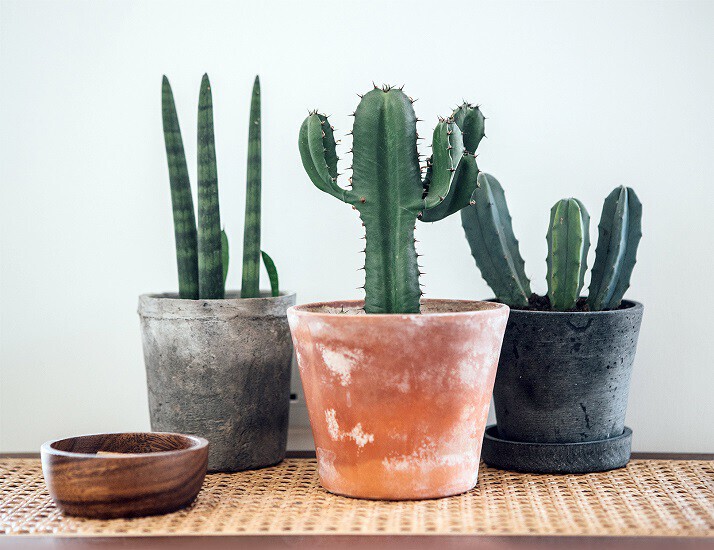These plants have different needs when it comes to dirt—here's how to know which is best.
Plants like succulents and cacti have unique soil needs due to their shallow root structures and drought preferences. Putting these types of plants in the wrong kind of soil, therefore, can cause a host of issues, ranging from root rot to eventual death. But getting them into the right soil isn't very complicated. Ahead, Adrienne R. Roethling, the director of curation and mission delivery at Paul J. Ciener Botanical Garden, shares exactly what you need to know about the soil your succulents need to thrive.

Mix Up Some Soil
Ideally, Roethling says that your succulents should be planted in a mix of potting soil and pea gravel. The reason? These varieties need porous soil. "The goal is to provide drainage," she says, which is what results when you mix the two. If you don't want to create your own concoction, you can usually find soil specially designed for these types of plants at garden centers. As for what not to use? "I'm not sure why folks get it in their heads to use peat or sphagnum moss or sand for plants, but these components are not ideal for cactus and succulents," she notes.
Add Water
To create a watering schedule you can adhere to, place sticky notes on your pots that outline when your plant needs water next (and note how much to add). This method is helpful, especially since understanding when to water is where most succulent owners fall short. "With a porous mix, it may be hard to tell if the soil is dry or not," Roethling explains. "I tell folks to stick their fingers in. If it feels cool or moist, watering can wait another day or two." For her succulents in her central own North Carolina home, that system usually results in two three waterings a week. How often your plants need H2O will depend on your specific environment.
Fertilize
Because succulents and cacti are long-term plants, Roethling says it's best to avoid fast-acting fertilizers, or iterations that are sold as cactus fertilizer. "They give plants a boost—that is great for seasonal plants," she says, "but I would find a slow-release fertilizer and apply only a couple times a year." If you're looking for a good option, she suggests Osmocote's granular version ($17.81, amazon.com), which is ideal for cacti.
Pro Tip
Since sufficient drainage is so critical when it comes to succulents and cacti, Roethling says to avoid using pots with saucers. Instead, she suggests allowing water to drain thoroughly through the bottom in order to avoid "wet feet," which is what roots get when they sit in moist or wet soil for too long. This can suffocate the plant and cause irreparable damage.